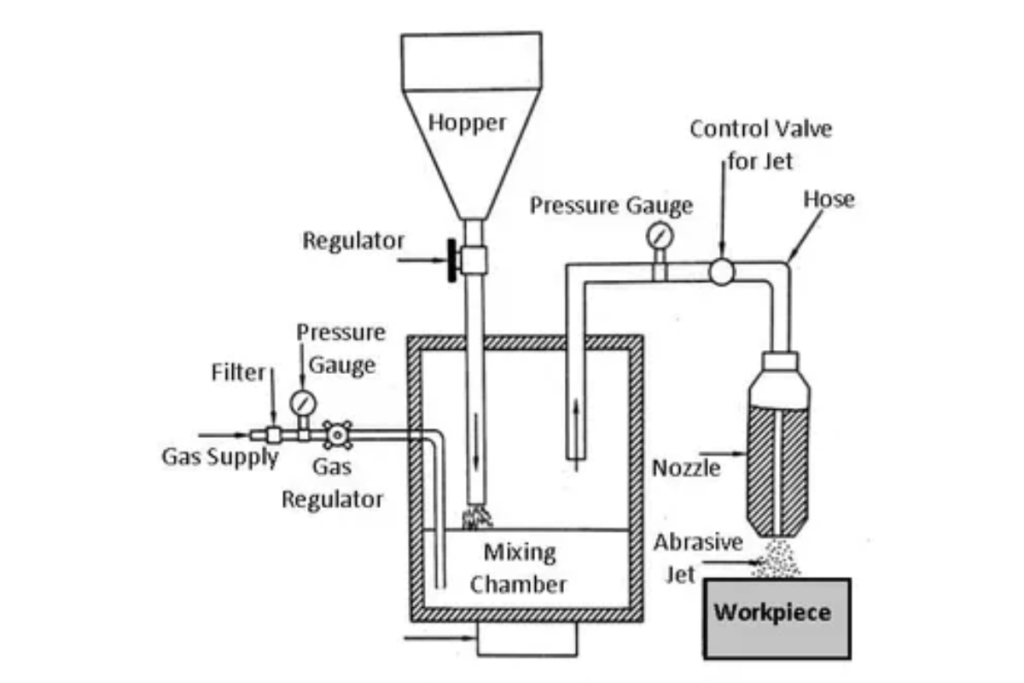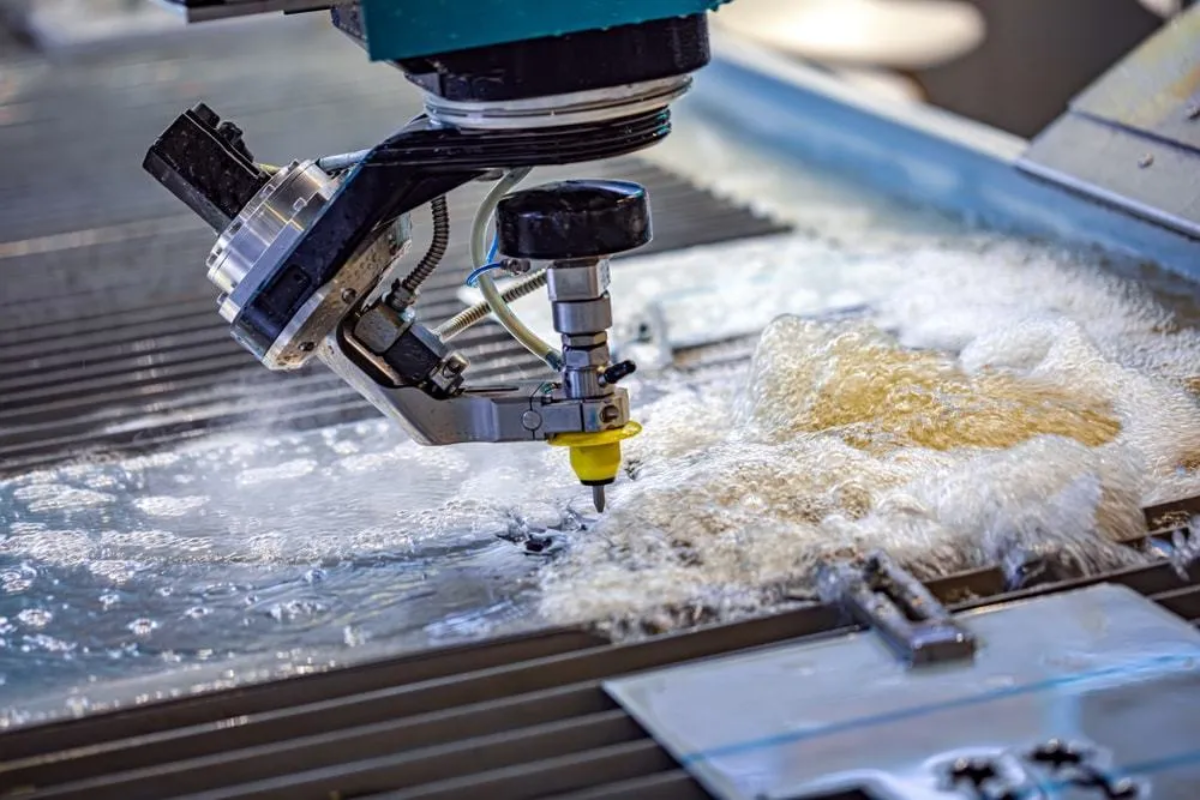Abrasive Jet Machining is an unconventional mechanical energy based process of removing material by impinging abrasive particles forcefully on a surface by using pressurized air or gas through a nozzle.

Working Principle: As the high velocity abrasive particles strikes on the workpiece, there occurs fracture due to constant impact force on the workpiece surface which removes material from the workpiece.
Abrasives Used: Silicon Carbide, Aluminum Oxide
Gases Used: Air, Nitrogen, Carbon dioxide
Nozzle Material: Tungsten Carbide
Construction:
- Hopper
- Compressor
- Nozzle
- Pressure Gauge
- Mixing Chamber
- Gas Regulator
- Vibrator
- Filter
Working:
Dry air enters into compressor through filter. Pressure and Flow of compressed air is controlled by gas regulator. Compressed air is sent into the mixing chamber. On the other hand, abrasive particles are added into mixing chamber through hopper. Both air and abrasive particles gets mixed. This mixture impinges on the surface of the workpiece through the nozzle. Nozzle increases the velocity.
Process Parameters:
- Abrasive size: 25 µm
- Nozzle diameter: 0.13 – 1.2 mm
- MRR: 0.8mm3/min
- Surface Finish: 0.5 – 1.2 µm
Applications:
- Drilling, cleaning and polishing of hard surface
- Cutting slots and thin sections
- Machining intricate shapes
- Medical Appliances
Advantages:
- No heat is generated in the work. Hence, it is suitable for machining heat sensitive materials.
- No chatter and vibration during the process as tool and workpiece do not have any direct contact.
- High surface finish can be obtained.
- Thin and fragile materials can also be machined.
- Low initial cost.
- In case of damage, depth damage is very small.
- Ease of operation.
Disadvantages:
- Low MRR (Material Removal Rate)
- Abrasive powder cannot be reused
- Not suitable for soft material as the abrasives may get embedded in the work material
- Less nozzle life
- nozzle maintenance required
- Higher chances of overcutting or stray cutting & taper may occur during drilling



No responses yet